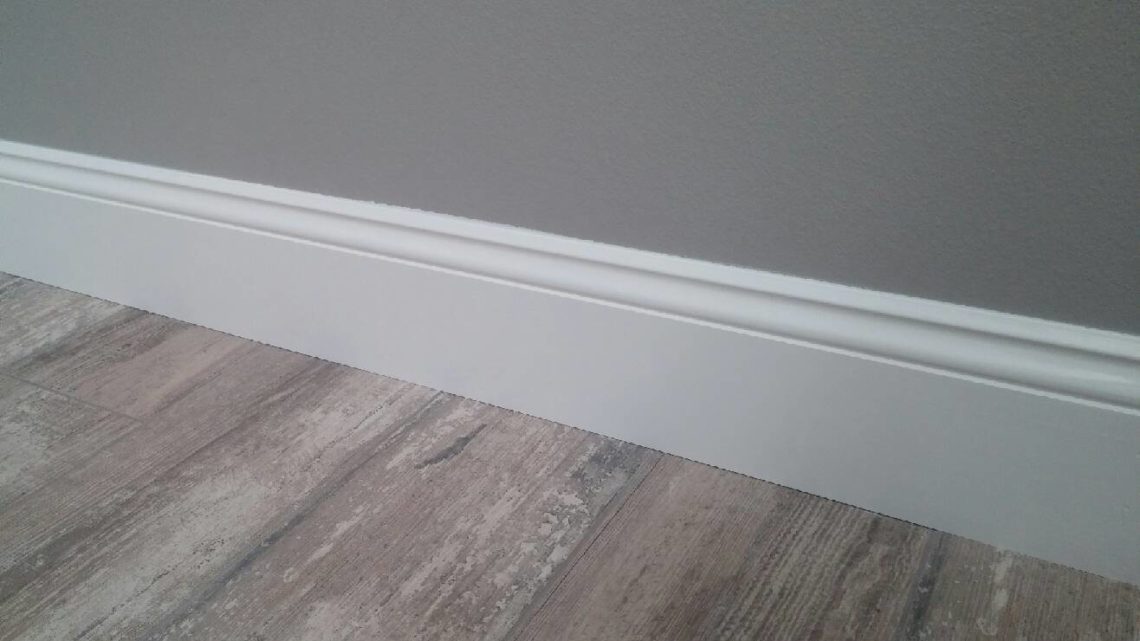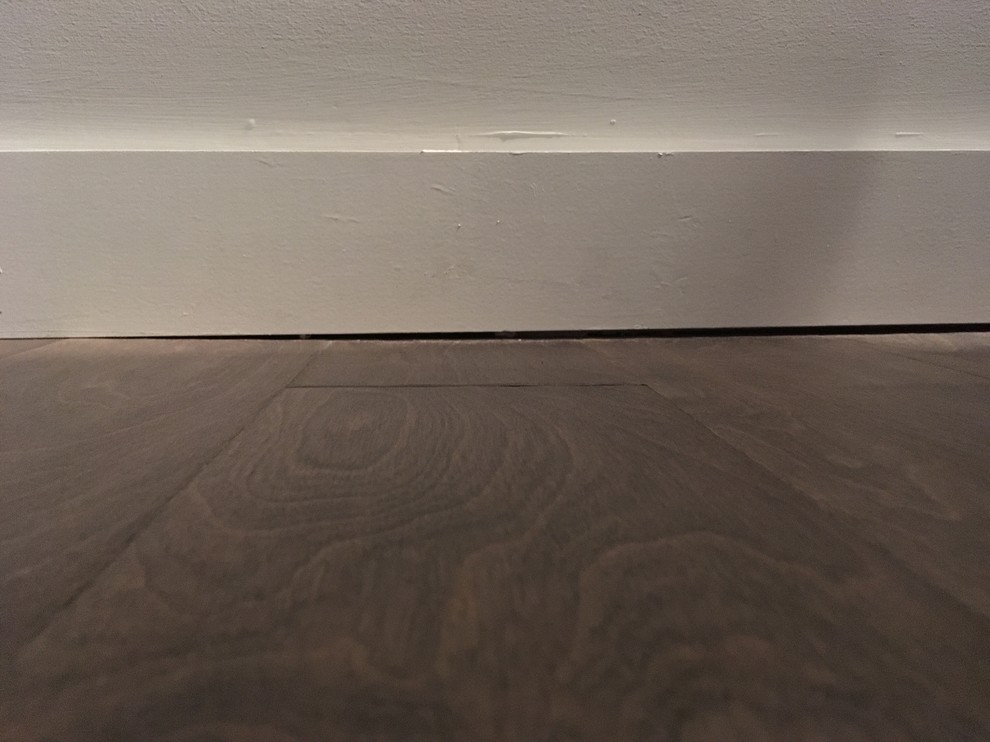Have you ever noticed a gap between your baseboard and the floor? It might seem like a small detail, but it can be a source of frustration, especially when dust, dirt, and even bugs find their way into your home. I certainly know the feeling. When I moved into my new apartment, I was horrified to see the gap between my baseboards and the floor. It was so wide that I could actually see into the wall cavities. I knew it was time to tackle the problem and find a solution.

Image: interior.tn
One of the solutions that came up was caulking the gap. But I wasn’t sure if it was the right thing to do. I’d seen some people recommend it, while others swore it was a terrible idea. This left me with more questions than answers. Was caulking between baseboards and floors really necessary? What are the pros and cons? In this article, we will delve into the world of baseboard caulking, exploring the reasons why you may or may not want to seal that gap.
The Baseboard and the Floor: A Love-Hate Relationship
Baseboards, also known as skirting boards, serve as a decorative and functional element in most homes. They cover the transition between the walls and the floor, protecting the walls from scuffs and hiding imperfections. The floor, meanwhile, provides a stable and often aesthetically pleasing surface for walking, furniture placement, and various other activities. Baseboards and floors can coexist peacefully, but a gap between them can create a variety of issues.
The gap between the baseboard and the floor is often a result of natural movement in the house. As the house settles and the wood expands and contracts due to changes in humidity and temperature, the baseboard and the floor may shift slightly, creating a gap. This gap can serve as a conduit for dust, dirt, and even pests to enter your home, as we previously discussed. The visual impact of the gap can also detract from the overall aesthetic appeal of a room. It might not seem like a big deal, but that gap can really stand out, especially when you are trying to create a polished look.
The Caulk Debate: To Seal or Not to Seal?
The decision of whether or not to caulk between the baseboard and the floor comes down to a variety of factors. There are both pros and cons to consider, and the best course of action will depend on your specific situation.
Pros of Caulking:
- Prevents Dust and Dirt Buildup: Caulk creates a barrier that prevents dust, dirt, and other debris from accumulating in the gap. This reduces cleaning time and keeps your home cleaner.
- Prevents Pest Infiltration: Caulk can act as a barrier against unwanted insects and pests that may try to enter your home. This is especially important if you live in a humid climate or have a history of pest problems.
- Enhances Appearance: A smooth, even transition between the baseboard and floor creates a more polished and professional look. It improves the overall aesthetic of your home.
- Reduces Noise: Caulk can help reduce noise from drafts and other sources by sealing the gap and creating a more airtight environment.

Image: viewfloor.co
Cons of Caulking:
- Can Trap Moisture: If you use the wrong type of caulk or apply it improperly, it can trap moisture, leading to mold and mildew growth. This can be a serious health risk and damage your baseboards and floor.
- Difficult to Remove: Caulk can be difficult to remove if you ever need to access the area behind the baseboard. This is important to consider if you plan on doing any future renovations or repairs.
- May Crack and Peel: Caulk can crack and peel over time, especially in areas that experience a lot of movement. This will require you to re-caulk the area regularly.
Choosing the Right Caulk and Technique
If you decide to caulk, it’s essential to choose the right caulk and apply it correctly. Using the wrong type of caulk or applying it incorrectly can lead to problems down the line. Here are some key considerations:
Caulk Type:
- Silicone Caulk: This is the most common type of caulk used for baseboards as it’s water-resistant, flexible, and easy to apply. However, it’s not easily painted and can be difficult to remove.
- Acrylic Latex Caulk: This type is paintable and easier to remove than silicone caulk. However, it is not as water-resistant, so it’s not suitable for areas exposed to high levels of moisture.
- Polyurethane Caulk: This type is very durable and resistant to water, but it can be difficult to apply and may require a primer before painting.
Application Technique:
- Cleaning: Thoroughly clean the area where you will apply caulk, removing any dust, dirt, or debris. For best results, use a damp cloth to wipe the area to ensure it’s free of any residue that could prevent the caulk from bonding properly.
- Applying the Caulk: Use a caulk gun to apply the caulk smoothly and evenly. Be sure to fill the gap completely, but don’t create a huge bulge and make sure the caulk is flush with the baseboard and floor.
- Smoothing: Use a damp finger or a caulk tool to smooth out the caulk, creating a clean, even finish. This technique helps to ensure the caulk blends seamlessly with the baseboard and floor, enhancing the overall appearance.
- Allow Drying Time: Allow the caulk to dry completely before painting it or applying any other finish. This drying time will vary depending on the type of caulk you use. Carefully read the product instructions to determine the time needed for the caulk to dry and cure properly.
Expert Advice and Tips for Caulking Baseboards
Caulking is a simple task that anyone can do with a little effort and attention to detail. To ensure you achieve professional-looking results, follow these tips:
- Prepare the area: Remove any loose or chipped paint around the area to be caulked. It’s best to clean the surface with a damp cloth to remove any dust and dirt. This will ensure that the caulk adheres properly to the surface.
- Use masking tape: Masking tape helps to create a clean line and prevent caulk from spilling onto surrounding areas. Apply it along the edge of the baseboard or the floor, creating a guide for the caulk. This will help ensure that the caulk is smooth and evenly applied.
- Allow the caulk to cure before painting: Always consult the manufacturer’s instructions for the recommended drying time. This can generally be anywhere from 24 hours to 72 hours. Avoid painting the caulk too soon because this can cause it to crack or peel prematurely.
- Clean up: Once you’ve applied the caulk, wipe away any excess caulk with a damp cloth. This step helps to keep the area clean and prevent the caulk from sticking to other surfaces.
FAQs About Caulking: A Quick Guide
Q: What type of caulk is best for caulking between baseboards and the floor?
– A: Silicone caulk is generally the best choice for this type of application as it’s water-resistant, flexible, and durable. However, for areas that may be painted, a paintable acrylic caulk is a better option.
Q: Is it necessary to caulk between baseboards and the floor?
– A: This depends on your specific situation. If you have a significant gap that allows for dust, dirt, or pests to enter, then caulking is a good idea. However, if the gap is small and you don’t have any problems with dust or pests, caulking is not absolutely necessary.
Q: How often should I re-caulk between baseboards and the floor?
– A: The frequency of re-caulking will depend on the type of caulk used, the amount of movement in your home, and the level of wear and tear from daily activity. Generally, you should re-caulk every few years or when the caulk starts to crack or peel.
Q: Can I paint over caulk?
– A: Yes, you can paint over caulk as long as you use a paintable variety of caulk. Ensure that the caulk is dry before painting to prevent any issues with peeling or cracking.
Should You Caulk Between Baseboard And Floor
Conclusion: Should You Caulk? The Choice is Yours!
Ultimately, the decision of whether or not to caulk between your baseboard and the floor is a personal one. Weigh the pros and cons carefully, consider the factors specific to your home, and choose the option that best suits your needs. If you choose to caulk, be sure to choose the right type of caulk and apply it correctly for the best results.
Are you interested in learning more about caulking, or do you have any specific questions? We welcome your comments and feedback!






